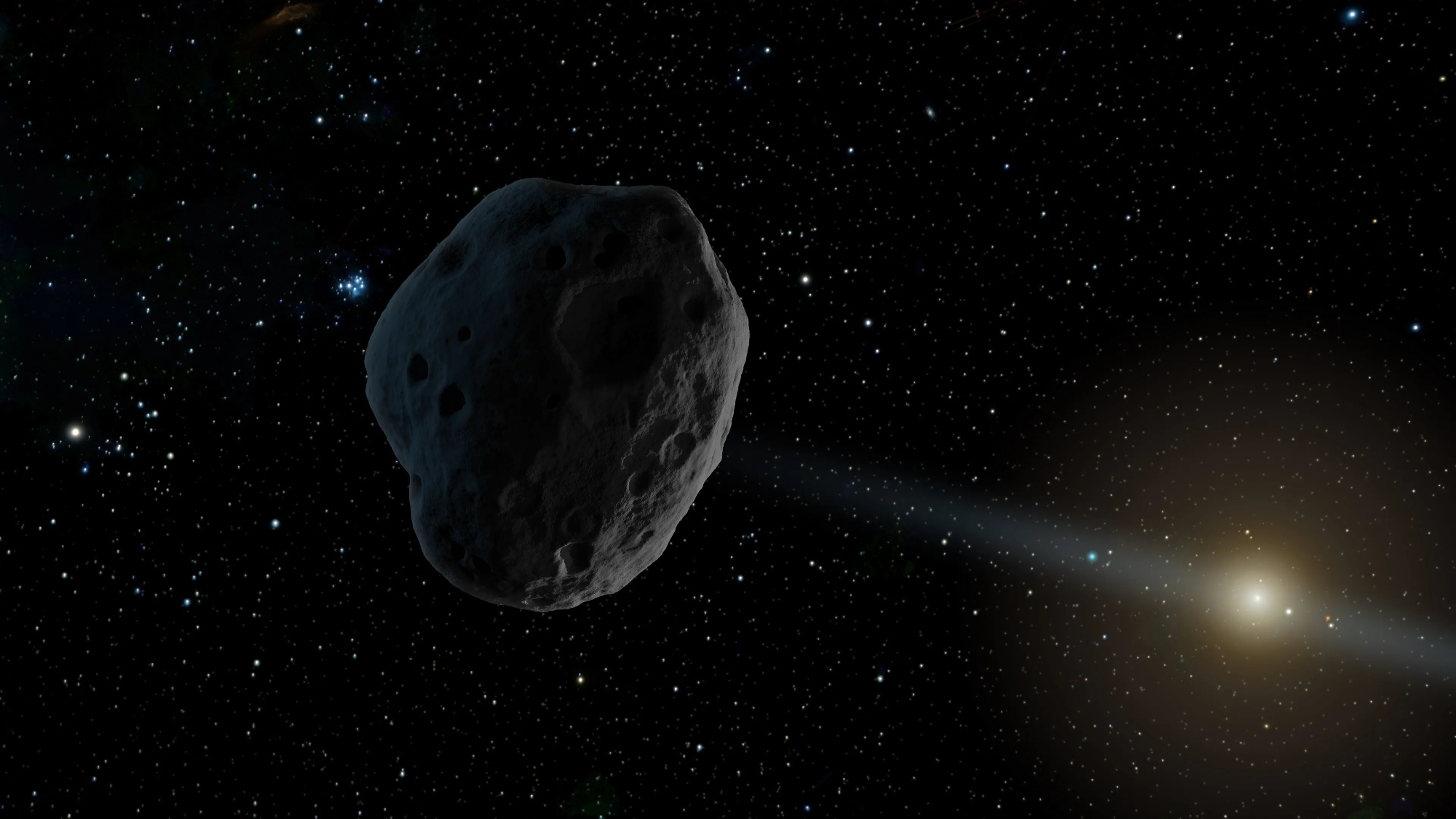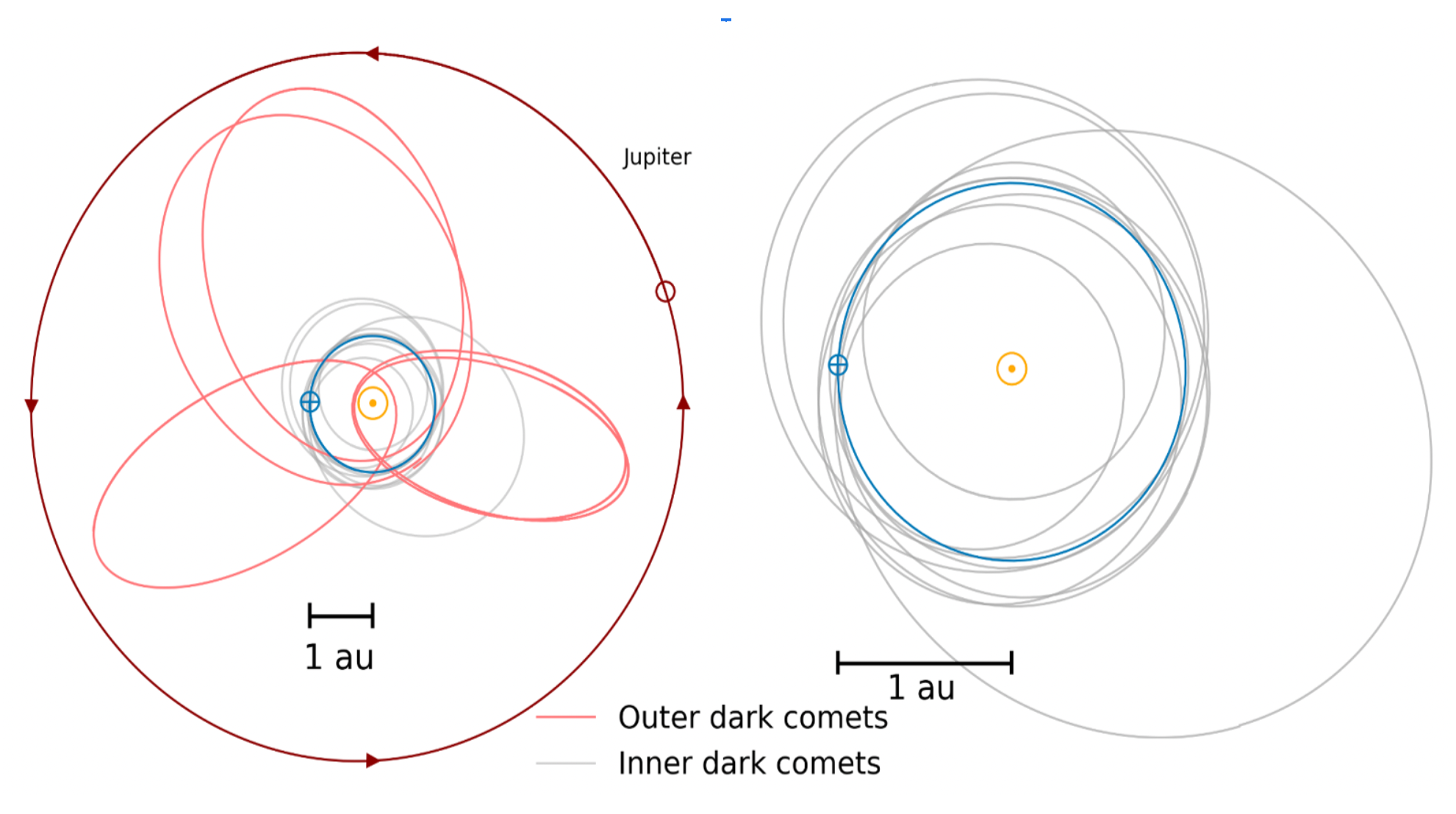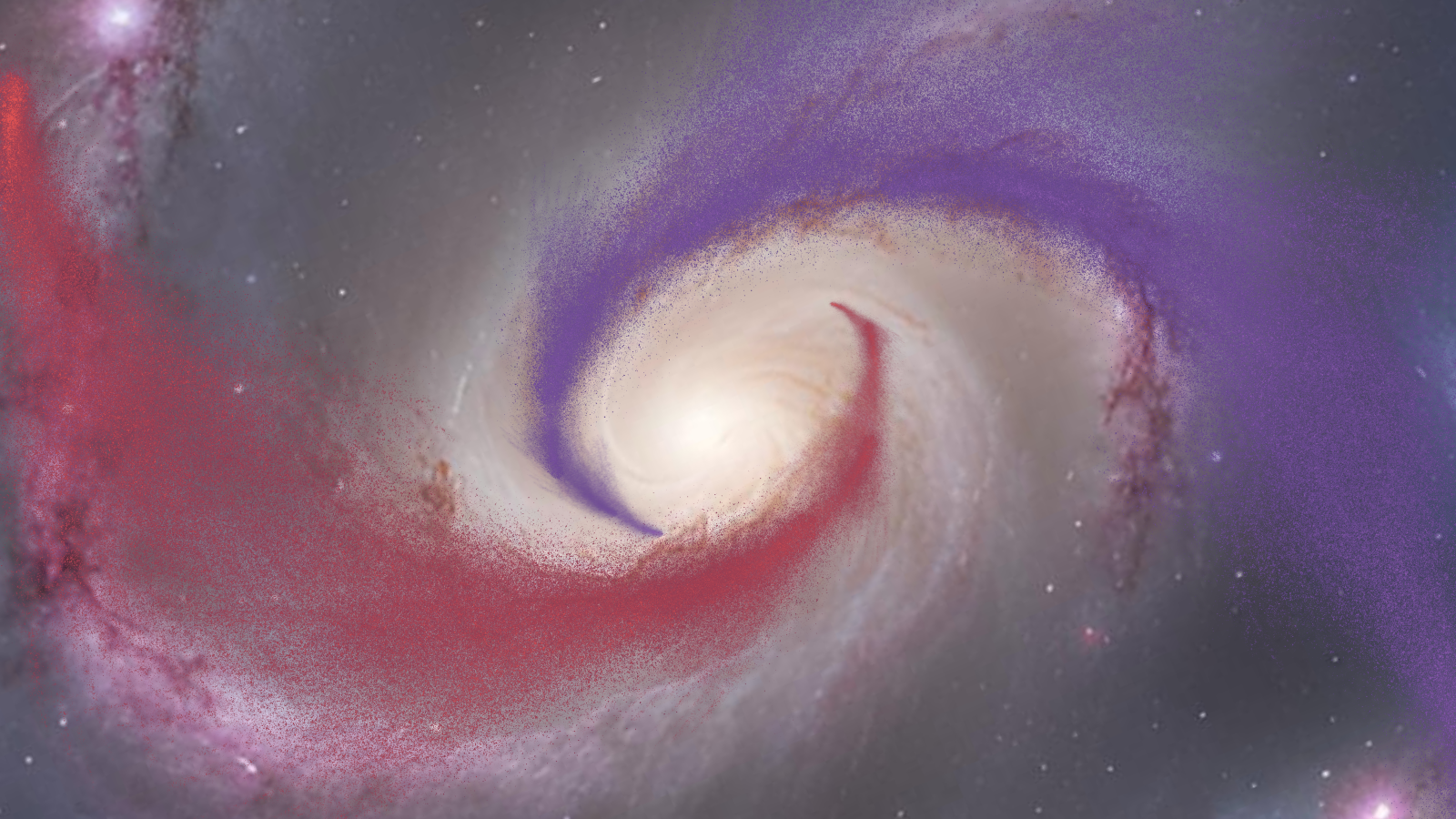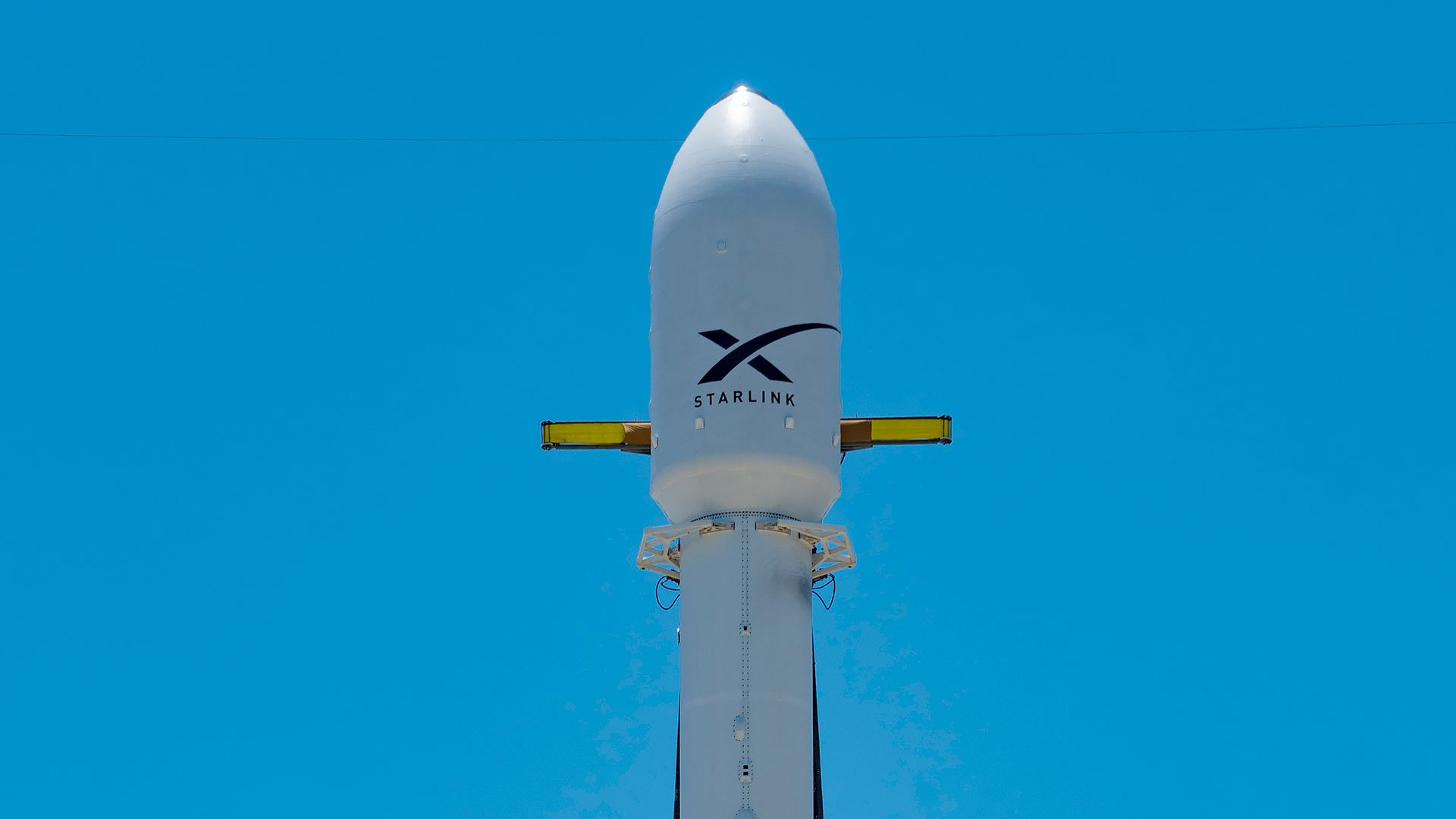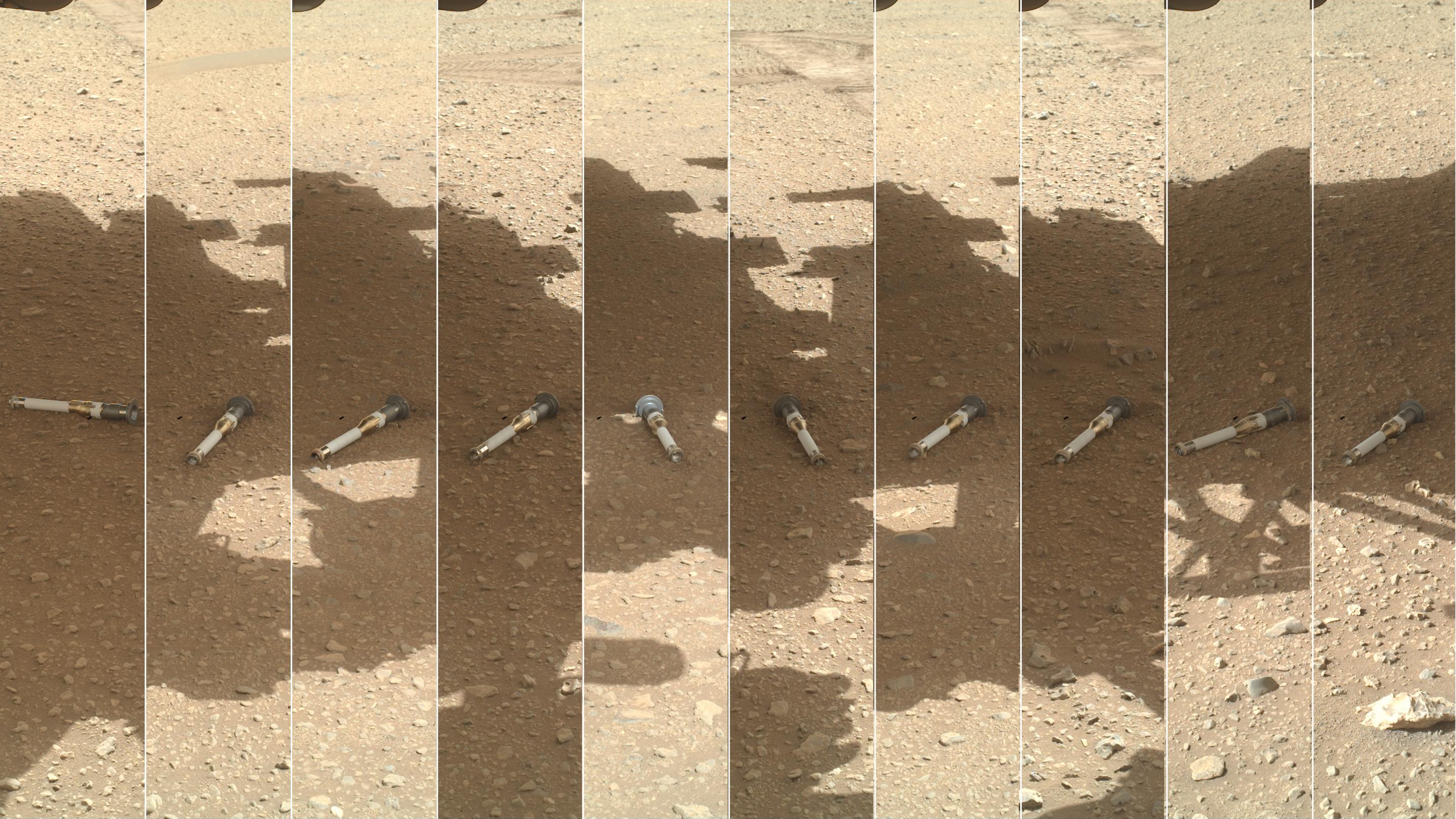2025 could be a record-breaking year in terms of discovering new dark comets.
In 2017, astronomers discovered the interstellar visitor ‘Oumuamua. In 2023, we reported the discovery of seven solar system dark comets close to Earth. Finally, just last month in 2024 — and just in time for the new year— we doubled the population of known dark comets and found that they come in two different flavors.
Most excitingly, the NSF-DOE Vera C. Rubin Observatory’s Legacy Survey of Space and Time (LSST) is scheduled to have its first light on the Fourth of July 2025. This new year should bring with it lots of new dark comets along with our next-generation observatory.
Why are comets interesting in the first place?
Alongside the planets, the solar system is teeming with smaller, roughly kilometer-size rocky bodies that we call comets and asteroids. These objects are fossilized leftovers from the earliest stages of the solar system’s history, when the planets themselves were forming. They also represent the building blocks of our planets. Therefore, their chemical makeup encodes information about the processes that led to the development of life on Earth.
Most importantly, these bodies can transport material around the solar system. We don’t know where our oceans came from in the first place; some scientists think water was delivered to Earth from comets and asteroids that originated farther out in the solar system.
Related: Astronomers discover 7 new ‘dark comets,’ but what exactly are they?
What is the difference between a normal comet and a dark comet?
Traditionally, the difference between comets and asteroids is that comets have beautiful cometary tails while asteroids do not. These dusty tails — or comae — form because comets contain ice.
When a comet gets close to the sun, the sunlight heats up the ice, causing it to sublimate, or transition from an ice to a gas. After this transition happens, the gas is blown off the surface of the comet in a process called outgassing. Small dust grains and rocks that are in the ice and on the comet’s surface are swept up and travel along for the ride. The beautiful tails are visible when this dusty material reflects sunlight back to Earth.
Comets also have nongravitaitonal accelerations associated with their motion. When material is blown off the comet’s surface, there is a rocket-like recoil that provides the nongravitational acceleration on top of their orbits, which are already set by the gravitational pull of the sun.
Dark comets display no cometary tails whatsoever, but still have strong nongravitational accelerations in their trajectories like normal comets.
How did we find dark comets?
In 2017, the first known interstellar object, 1I/’Oumuamua, was discovered passing through the solar system. This object had all of the properties of the dark comets — it had no cometary tail at all but significant nongravitational acceleration. This led to lots of different explanations about the object’s origin, ranging from something like a dark comet to a light sail produced by an intelligent alien species.
In 2023, two papers were published reporting the discovery of nongravitational accelerations on seven inactive-looking asteroids. These objects were called dark comets, because they accelerate like comets do, but have no obvious dust tail.
Just last month, we reported the discovery of seven new dark comets. This doubled the population of known dark comets, bringing the total to 14 — not including ‘Oumuamua.
Most excitingly, we saw that there are two distinct types of solar system dark comets: inner dark comets, which are smaller (around 33 feet, or 10 meters, in size) and on close, circular orbits, and outer dark comets, which are larger (around 0.6 miles, or 1 km, in size) and on more distant, elliptical orbits.
Related: Comets: Everything you need to know about the ‘dirty snowballs’ of space
Why should we be excited about the New Year?
Even without the advent of the Rubin Observatory, there is plenty to be excited about for future dark comet discoveries.
Our rate of discovering new dark comets has been drastically increasing every year, from the discovery of ‘Oumuamua in 2017 to our discovery of two distinct populations of solar system comets in 2024. At this rate, 2025 should bring many new dark comet discoveries.
We estimated that there should be many more dark comets in space that we don’t yet have enough data to detect. Therefore, our most recent discoveries may be just the tip of the metaphorical iceberg: there could be many more dark comets lurking in the solar system, waiting to be discovered this new year.
But most excitingly, the Rubin Observatory coming online this year should discover many new dark comets. Located in the Atacama Desert in Chile, the Survey has the biggest camera ever built. It will scan the entire southern hemisphere sky almost every night. Moreover, it is about five orders of magnitude more sensitive than any of our current all-sky surveys, and is extremely powerful at finding anything that moves in the night sky.
It also should be able to find much smaller objects than we can find with our current telescopes, so we might even see new types of dark comets.
This new year will bring with it one of the most powerful new telescopes, and hopefully many new dark comets.

